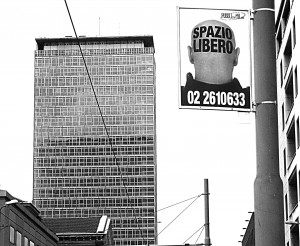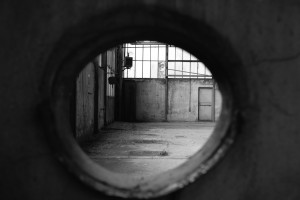 Che cos’è il riuso temporaneo? What is temporary use?
Che cos’è il riuso temporaneo? What is temporary use?
Che cos’è il riuso temporaneo?
Edifici, aree urbane e spazi aperti sono soggetti a cicli di alto e basso utilizzo, nel corso dei quali vi sono dei momenti di transizione, di incertezza e di immobilismo. Crisi economiche, instabilità del mercato finanziario, deindustrializzazione, cambiamenti politici, portano spesso al collasso delle vecchie destinazioni d’uso e quando ancora non vi sono nuovi programmi e progetti di riuso, allora si verifica un “gap temporale”. Le cause del ritardo nella riqualificazione degli spazi in abbandono sono molteplici, spesso dovuti ai costi elevati di riqualificazione e bonifica ambientale, alle opposizioni politiche e alle proteste locali per progetti decontestualizzati, o alla lentezza nell’approvazione di piani e progetti di recupero, o ancora allo scarso interesse economico di alcune aree.
E’ in questo tempo di mezzo tra vecchia e nuova destinazione d’uso, che è possibile sperimentare attività e progetti temporanei (usi ad interim), che possono offrire nuovi scenari di rigenerazione urbana. Arsenali portuali e scali ferroviari abbandonati, fabbriche e centri commerciali dismessi, cascine e capannoni agricoli in disuso, palazzi ed appartamenti vuoti in città, uffici e negozi sfitti e ancora slarghi e spazi interstiziali tra infrastrutture, campi incolti e terrain vagues…
Uno sguardo attento e ravvicinato a molti spazi e terreni vuoti che non trovano ancora un nuovo utilizzo definitivo in alcune città europee, ci mostra come in assenza di sviluppo immobiliare, molte aree sono diventate un terreno di sperimentazione per differenti popolazioni, nuove forme di arte, musica, cultura pop, come pure il luogo di avvio per associazioni legate al sociale con progetti di abitazioni temporanee per studenti o ancora spazi per eventi ludici, per il giardinaggio, per il commercio informale dei mercatini. L’incertezza e apertura di questi luoghi ha catalizzato nuove forme di città (Oswalt 2003), ispirato attività e progetti temporanei, ha permesso l’avvio di economie informali e nuovi servizi autorganizzati per i contesti locali. Usi inaspettati che hanno spesso accelerato processi di ripresa economica.
Gli spazi vuoti possono essere intesi come riserve urbane per la sperimentazione dei sogni collettivi… Per periodi di tempo mutevoli sono spazi resistenti alle pressioni e speculazioni economiche, liberi di accogliere e lasciare sedimentare un capitale sociale. Questi luoghi divengono un laboratorio dove osservare le tattiche di autorganizzazione della città post-capitalista.
What is the temporary reuse?
Buildings, urban areas and open spaces are subject to cycles of high and low utilization, during which there are moments of transition, uncertainty and immobility. Economic crises, financial market instability, de-industrialization, political changes, often lead to the collapse of the former intended use and even when there aren’t new programs and reuse projects, then there is a “time gap”. The causes of delay in the redevelopment of abandoned spaces are varied, often due to the high cost of environmental remediation and redevelopment, to the political oppositions and protests for local projects out of context, or slowness in approving plans and restoration projects, or even to poor economic interest in certain areas.
It is in this “time in between” of old and new use, that it is possible to experience temporary projects and activities (use ad interim)1, that can offer new scenarios of urban regeneration. Derelict port arsenals and railway stations, abandoned factories and shopping malls, farms and farm sheds in disuse, buildings and empty apartments in the city, vacant offices and shops, and more widenings and interstitial spaces between infrastructures, uncultivated fields and terrain vagues…
A careful and close look to many areas and vacant lots, that have not yet a definitive new use in some European cities, shows us how, in the absence of real estate development, many areas have become a testing ground for different populations, new forms of art, music, pop culture, as well as the place to start-up for associations related to social projects for temporary student housing, spaces for events, or entertaining, for gardening, informal markets for trade. The uncertainty and openness of these places has catalyzed new forms of cities (Oswalt 2003), has inspired temporary activities and projects, has allowed the initiation of self-organized informal economies and new services to local contexts.
Unexpected uses that have often accelerated processes of economic recovery. The empty spaces can be understood as urban reserves for testing the collective dreams… For changing periods of time they are spaces resistant to economic pressures and speculations, free to accept and to settle a social capital. Theseplaces become a laboratory to observe the tactics of self-organization of the post-capitalist city.

